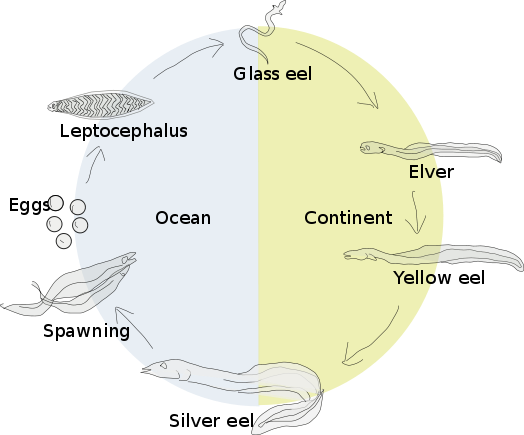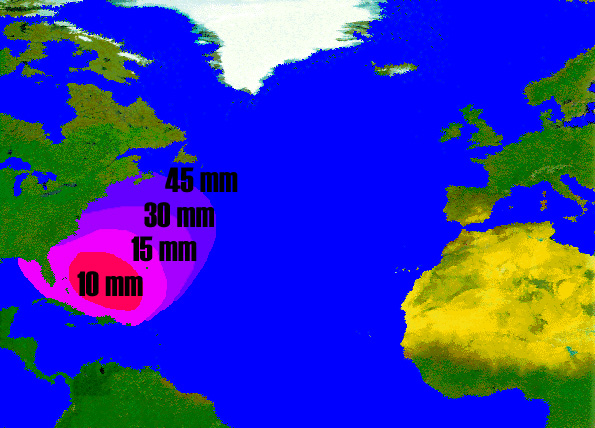For some reason I always have trouble thinking of fish to blog about. I think it’s because I barely know anything about fish, so most species seem the same to me. So most of the time I flip through my Big Book of Animals and wait until an interesting fish jumps out at me. Today that fish was the European eel, and while I mostly picked it because I haven’t written about an eel yet, it turns out these guys are super cool animals. Plus, the word ‘eel’ is really funny. It’s one of those words that looks weirder and more wrong the more you look at it, and since I’ve been researching eels for the last hour, it makes me chuckle each time I write it.
European eels are named because they spend most of their lives in Europe, although they do migrate. In fact, the life cycle of eels is so complex and strange that we really don’t know that much about it. What we do know is there are a number of distinct stages of the European eel life cycle, and each is so different that I’m going to talk about them one by one.

Originally people had no idea what baby eels looked like – because baby eels look nothing like eels. Aristotle thought that eels were born from mud, which really makes no sense at all. It turns out that very young eels, known as leptocephali (from the original scientific name for them, when people thought they were an entirely separate species), look like tiny, transparent leaves. They spawn in the Sargasso Sea, and then migrate to Europe, drifting on ocean currents for as much as three hundred days.

Image By Original uploader was Kils CC BY-SA 3.0
Once the eel larvae make it near the coast, they transform into mini-eels, known as glass eels. They have a more eel-like shape than the leptocephali, but remain transparent and tiny. Glass eels migrate inland, often doing crazy things like wiggling through grass, burrowing through mud or piling on top of each other in the thousands to climb barriers. During this crazy migration, glass eels develop into juvenile eels, known as elvers.
Elvers are pigmented and look like little eels, and for the next 4-14 years hang out in their chosen freshwater homes. They spend their time feeding on small invertebrates and growing. They can get quite big, with some specimens growing over a meter in length. At the end of this period, the elvers are known as yellow eels, which is the final stage in the eel life cycle before maturation.

Image CC BY-SA 3.0
When an elver does mature, it has to migrate back to the ocean, a treacherous journey made more difficult by the fact that most commercial eel fisheries catch yellow eels as they head back to sea. Once the eels actually get to the ocean, they go through yet more changes. Their eyes grow larger, and adapt better to seeing in the blue ocean depths. They also change colour, turning silver to camouflage better in the sea. Oh and their guts dissolve, so they can’t eat anything, which makes the 6,000 km migration they have to undergo all the more gruelling. Once there, the silver eels simply lay their eggs or deposit sperm and die.
I feel bad for eels. Their lives are so complicated I can barely keep it straight in my head. Still, there are some perks. They don’t mature for at least seven years, and usually are around twenty when they die. Some reports have European eels living a ludicrously long time, with one wild eel living for 85 years. So hopefully while eels are growing in happy freshwater areas they relax, because the entire rest of their lives is spent in a really long, very difficult, migration.
Cover image By Dmitriy Konstantinov – Own work, CC BY-SA 3.0
